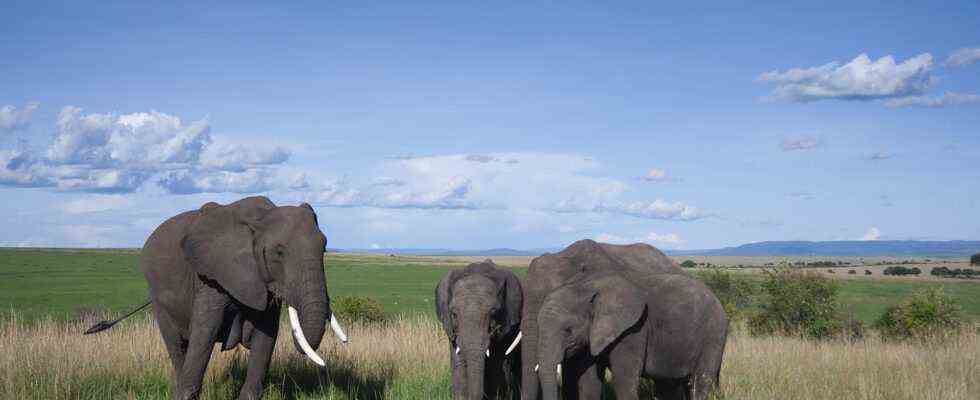As of: 02.09.2021 4:56 a.m.
For months the counters traversed Kenya’s nature reserves to record elephants, zebras, giraffes and other animal inhabitants. The animal rights activists are happy with the result, but they also warn.
The wildlife counters were out and about in Kenya for months. In bush planes, jeeps or simply on foot. They wanted to find out how many elephants, zebras, giraffes and other animals live in the numerous nature reserves of the East African country. The biggest action of its kind so far.
“This is how we find out where we can best use our resources,” said Kenyan Wildlife Protection Agency director John Waweru during the census ARD studio Nairobi. “Where are there many elephants that we have to protect. Where are lions and how many do we have?”
The answer is now. While the numbers went down for decades because of poaching, there is now an increase in almost all species. The giraffes in particular have increased in number. Almost 35,000 of them were recorded – two years ago, according to the figures, it was around 10,000 fewer.
“It is our national heritage”
Reason to cheer for President Uhuru Kenyatta of Kenya. “It’s our national heritage. Something to be proud of,” he said. “I would like to congratulate the protection agency on how successful they are against poaching. This is paying off, as we can now see. We have stopped the losses of elephants, rhinos and other threatened species.”
Especially in Corona times, it was not a matter of course that the animals would continue to be protected. Because there is no income from tourism, the “Kenya Wildlife Service” receives less money for the protection of wild animals. Even if costs in other areas – such as for information and education – were quickly cut, the Kenyan state had to step in.
The commitment shows how seriously the government takes the preservation of game stocks, says the responsible minister, Najib Balala. “It was so important that the rangers’ salaries continued to be paid. This decision brought us a lot of recognition – not only in Kenya, but internationally. That is why we can now say that we were a good example for the whole world.”
Fewer antelopes and gazelles
However, there is a small downer: the number of antelopes and gazelles fell slightly. Which could be related to the fact that they are being hunted more for their meat. In addition, their living space is becoming smaller because farmers are creating fields or increasing their herds of cows and goats.
The Africa director of the animal welfare organization “International Fund for Animal Welfare” therefore warned against resting on their laurels. “We are celebrating that the numbers are rising, but they are still dangerously low. Even an outbreak of disease could push them down again.”
For one species, the count was over particularly quickly. Of the northern white rhinos there are exactly two left in the world. The last two specimens, the rhinoceros Najin and Fatu, are therefore specially guarded in a protected area in Kenya. With the help of frozen sperm and artificial insemination, they are supposed to multiply. An attempt to save the species from extinction and to be able to count more animals again at some point.
Good news from Kenya: More giraffes, elephants and rhinos
Antje Diekhans, ARD Nairobi, September 1, 2021, 1:15 p.m.

